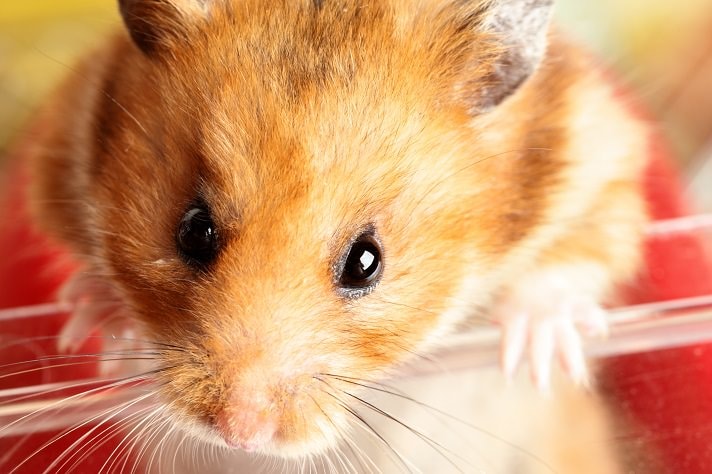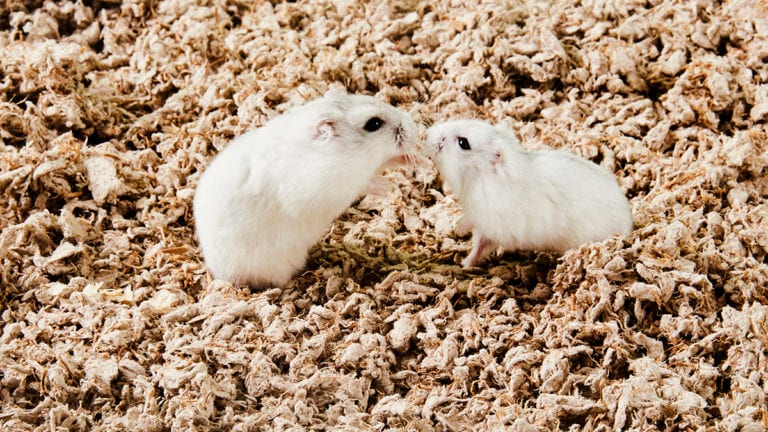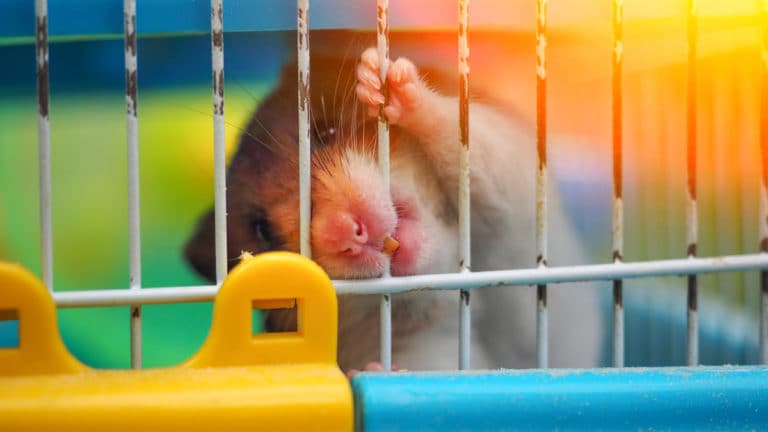No author listed in original article. Hamsters are not like dogs, which are the same genus and species but different breeds. So when you look at the different hamster types you are not looking at different hamster breeds, but rather different hamster species and, sometimes, even different genera. Below are the five most commonly kept hamster species.
Syrian Hamsters
Syrian hamsters (Mesocricetus auratus) are larger and easier to hold than the dwarf species. Syrians are the better hamsters for children and those who want to spend more time holding their hamster. They are solitary and must be kept alone. Syrian hamsters come in a variety of colors and two coat lengths, either short hair or long hair. What color of Syrian hamster to get is very much a matter of personal choice. No color makes a better pet than the other, and no colors have health problems associated with the color gene. While searching for the right hamster to buy you might run across hamsters with cute names such as Calico, Panda Bear or Black Bear. These names refer to the Syrian hamster’s color or pattern. If the color appeals to you and the Syrian hamster has a nice temperament, get it.
Look for a Syrian hamster that is easy to pick up and doesn’t have to be chased around the cage. Although hamsters aren’t usually a “sit-on-your-shoulder-or-hands” type of pet, look for a Syrian that will calmly go from palm to palm without acting panicked or leaping from your hands. Just understand that despite the higher price of Syrian hamsters with less common colors or patterns, they are still Syrians in every way. Expect the same temperament and habits with them as you would with all other Syrian hamsters.
Dwarf Hamsters
Dwarf hamsters are smaller than the Syrian hamsters. They are social animals and should be kept in same-sex pairs or trios. There are several species of pet dwarf hamsters to choose from, the most common being Campbell’s, Winter Whites, Roborovskis and Chinese. Though all dwarf hamsters seem similar in their needs, each species has a very different temperament and should only be housed with others of its own species. When looking for hamsters for kids, dwarf hamsters are not the ideal choice for a child’s pet due to their smaller size and quick movements. Unlike Syrian hamsters, which are rarely awake during the daylight hours, dwarf hamsters are crepuscular (most active at dusk and dawn).
Campbell’s Dwarfs
Campbell’s Dwarfs (Phodopus campbelli), often sold incorrectly as “Siberian” dwarfs, are the most commonly seen of the pet dwarf hamsters. They come in a wide variety of colors and both standard and satin coats, while many of the other dwarf hamster species are more limited in their varieties. Campbell’s hamsters are active and are lots of fun to watch. They are bold and friendly, and often enjoy interacting with their caregivers so long as they are gently handled. Some Campbell’s hamsters can become territorial about their space, however, and ease of access is important in choosing an appropriate hamster cage. While pet Campbell’s hamsters are best kept in pairs or groups, they may start fighting with each other at some point and will need to be separated. If this happens, purchase additional hamster cages so that you can house the hamsters separately. Diabetes is rampant among some lines in the Campbell’s, so choose the line you adopt from carefully.
Winter White Hamsters
Winter White hamsters (Phodopus sungorus) are similar to Campbell’s dwarf hamsters, but they have a different body shape and different color variations. As pet hamsters go, Winter White hamsters also tend to be a bit more reserved than the Campbell’s. Because they can interbreed with Campbell’s, obtaining a true Winter White can be difficult. Hybrid hamsters are rampant in the United States. If your heart is set on a pet Winter White hamster, try to find a breeder dedicated to keeping their lines pure.
Roborovski Dwarf Hamsters
The Roborovski Dwarf hamsters (Phodopus roborovskii) are relative newcomers and are not commonly seen in pet stores. They are fast — very, very fast. Roborovski Dwarfs are also the smallest of the hamster species. They are hard to handle and are not the ideal hamsters for kids or for those who want to hold their pet hamster.
Many pet Roborovski hamster owners fondly refer to these pets as “furry goldfish” — observation is the best way to interact with them because they just don’t stay in your hands. Roborovskis are a lot of fun to watch, however, and can become friendly. Despite their small size, Roborovski Dwarfs require a larger hamster cage than any of the other hamster species and should be provided with lots of hamster toys.
Chinese Hamsters
Unlike the other dwarf hamsters, Chinese hamsters (Cricetulus griseus) are not a true dwarf. Size-wise, they are between the Campbell’s hamster and the Syrian hamster. Like the Roborovskis, they have special needs. Chinese hamsters require a large hamster cage or container because they do best with lots of objects to hide in. Chinese hamsters are fast and hard to catch, but should sit still once in your hand. Pet Chinese hamsters are illegal in some places, such as California, so check with your state’s Department of Fish and Game or your local hamster club before getting this hamster species.
Excerpt from the Popular Critters Series magabook Hamsters with permission from its publisher, I-5 Publishing, LLC.
Posted by: Chewy Editorial
Share:









